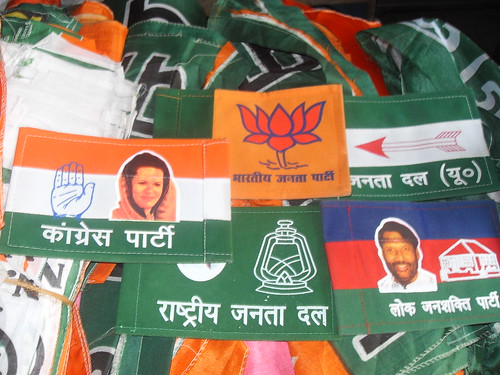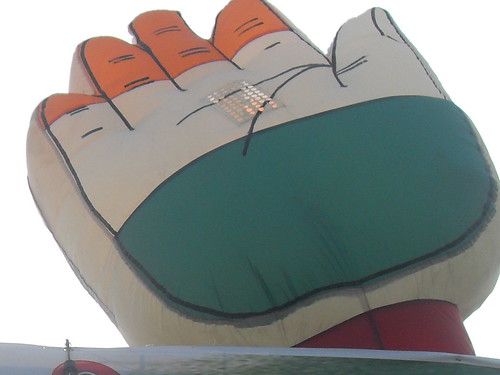By Faraz Ahmad
If on May 16, the results of India’s general elections turn out to be as portrayed in the Exit Polls, it will virtually spell the end of Congress era.
The space for the urban, Brahmin Savarna minority ruling the nation for last 77 years, beginning with the first Congress ministries in 1936, has been steadily shrinking post the Mandal phenomenon introduced by former Prime Minister V P Singh in 1990.
The first flush of Mandal was rolled back by the Brahmin establishment of this country by raising the temperature over some obscure medieval mosque in Ayodhya lying almost abandoned for centuries. But the sub text of the whole agitation for demolishing the Babri Masjid and constructing a “Bhavya Ram Lalla Mandir” was that the Muslims whom BJP leader Uma Bharti then called “Babar ki auladon” (sons of Mughal Emperor Babar) have no right, should live on the sufferance of the Hindu majority and also learn to wish nothing and seek nothing, as the longest surviving Sarsanghchalak (Supreme Commander) of Rashtriya Swayamsevak Sangh (RSS) Guru Madhavaro Sadashiv Golwalkar once enunciated very early in the life of independent India. The VHP/Bajrang Dal/ Durga Vahini and ABVP along with Shiv Sainik marauders who demolished Babri Masjid on December 6, 1992 raised full throated slogan: ‘Hindi, Hindu, Hindustan, Mullah Bhago Pakistan. Those days L K Advani, the original Hindutva icon, who led the Ram Rath Yatra from Somnath temple in Gujarat to Ayodhya, with Narendra Modi as one of his charioteers while the Rath traversed Gujarat, never called India Hindustan, he always called it ‘Hindu-sthan’ (a place for Hindus).
Getting Advani to ride Ram Rath and traverse almost the entire country, leaving just a few parts of South and East, was a brilliant move conceived by none other than the then RSS supremo Balasaheb Deoras. It worked wonders for the BJP. But more importantly it succeeded in diverting the attention of the backwards and Dalits from V P Singh’s attempt to tantalisingly dangle their possible empowerment through the Mandal report—that the Brahmins in particular and generally all Savarnas had usurped what legitimately belonged to them. V P Singh succeeded in suddenly awakening the aspirations among the backwards of northern India to grab power. That threat to the supremacy of the Brahmins was skillfully diverted tangentially by the BJP/RSS through Ram Janambhoomi Mandir agitation and at least temporarily and partially the Mandal genie pushed back into the bottle.
It was the beginning of the rise of BJP and the slow descent of the Congress party. Rajiv Gandhi was assassinated by Sri Lankan Tamil militants during the 1991 mid- term polls and even though the Brahmin establishment briefly and tentatively put its eggs in the basket of P V Narasimha Rao, but it remained unsure. Besides, soon as the Mandir fever subsided, Mandal ghost came back to haunt the Hindutva brigade with new players Lalu Prasad in Bihar and Mulayam Singh Yadav and Mayawati in UP emerging as the champions of the OBCs and Dalits. Such was the pressure of social justice that even Sanghi backward leaders like Kalyan Singh and Uma Bharti couldn’t resist the demands of their vote bank. Eventually both were thrown out of the BJP for wearing their caste identities on their sleeves. They have recently been re-inducted into the BJP.
The Brahmin ruling class which once considered Congress as it’s preferred party, started deserting the sinking Congress ship and jumping into the BJP bandwagon progressively after Mandal. But the BJP too faced a problem. In the Congress era, the Brahmin ruled India through a rainbow coalition of vote bank consisting of Brahmins, of course, but also the Muslims and Dalits, who sought Congress protection facing threats to their life and limbs by the Sanghis. Post Mandal that scenario changed and the Muslims and Dalits abandoned the Congress and moved to OBC and Dalit leaders, especially in UP and Bihar, namely Lalu, Mulayam and Mayawati, who offered them better security and some recognition as well. So the Congress was left high and dry. But the Brahmin was not in a happy situation in the BJP either.
The Savarnas were surely for the BJP, but their vote alone could not get the BJP anywhere near power. In fact except for a few (and not all) seats in Uttarakhand and Himachal Pradesh there is no other state where the Savarnas have the numbers to secure the election of a single MP. To reach the Lok Sabha and state assemblies the BJP needed to plus its vote and therefore it needed Uma Bharti in MP, Kalyan Singh in UP and occasionally befriend Mayawati. BJP’s Brahmin voter found this distasteful and turned his nose at the prospect of rubbing shoulders with the masses. As a result between 1998 and 2004 when the BJP-led NDA government was in power at the Centre and most of this period in UP as well, the Brahmin disillusioned and disenchanted with the BJP, started drifting towards the BSP, or SP and sometimes even the Congress party. This became most apparent when in 2009 the BJP was reduced to just nine seats in the Lok Sabha from UP, where once they almost touched 60 and are hoping to repeat it again this time.
The confusion and general disillusionment in the core BJP constituency led to the Congress improving slightly on the BJP numbers to return to power in 2004. But more than that it was a slight disillusionment among the poorer sections of the urban upper caste together with Sonia Gandhi’s sagacity in striking alliances in Maharashtra, Andhra Pradesh, Tamil Nadu, Bihar and Jharkhand which helped the Congress pip the BJP at the post. Her decision not to accept the prime minister’s chair, despite all around pressure and instead choosing Manmohan Singh, who commanded tremendous respect among the market friendly sections of the economists, helped Sonia establish her primacy. But the typical Brahmin class was still a little skeptical and tentative about Sonia’s leadership. Never mind the skeptics, the Sonia-Manmohan team was a winner, with Sonia pushing for some succor to the deprived sections while Manmohan Singh pushing the GDP ahead. Credit also goes to the allies who, except for the Telangana Rashtra Samiti (TRS) stood solidly with Sonia Gandhi, till Manmohan Singh forced a rift with the Left persisting with the Indo-US nuclear deal. That was the beginning of the end of the honeymoon for the UPA, even though thanks to the good work done by UPA-I the Congress returned with even better numbers and an unexpected 206 in 2009. That was when in 2009 Congress broke off with Lalu, Ram Vilas Paswan and K Chandrasekhar Rao. Such was the goodwill earned by UPA-I that Lalu, Paswan and Rao, all three were decimated while Congress did exceedingly well.
But the seeds of suspicion against the Congress were sown in the minds of the Brahmin forces over its various schemes and political moves. The Savarna students from the elite IITs, AIIMS and other similar prestigious universities were on the streets agitating the moment the UPA-I government decided to introduce reservation for the OBC students in the higher educational institutions. Immediately the typical ABVP variety students formed the Youth for Equality. Arvind Kejriwal, also an alumnus of IIT, Kharagpur, though already a senior officer went to AIIMS to lend support to Youth for Equality.
MNREGA too did not go down well with the rural land owning classes because as a small farmer explained some time back, the rate of daily wages went up substantially for the daily wage earner and that pinched those who could get work from the same labour for a pittance. Suddenly the upwardly mobile sections of society, particularly in urban and semi-urban centres were up in arms against Sonia Gandhi and Manmohan Singh. Meanwhile the Left disenchanted with the UPA government and out to wreak vengeance for the breakup, raised the issue of the then Telecom Minister and DMK leader A Raja giving away 2G licences to dubious parties for a pittance. The fact is that Raja had done nothing different from what the “virtuous” Arun Shourie did in his innumerable disinvestment exercises and for which he was rewarded with the Telecom portfolio as well where he too gave away licenses to his favourites without going through an auction. The Congress party having little faith in alliances failed to stand up for Raja, while a visibly biased, agenda driven Comptroller and Auditor General Vinod Rai deliberately fudged figures to make a mountain of a mole hill and taking a cue from him Subramaniam Swamy with a brief from Sunil Bharti Mittal and the rest of telecom operators’ cartel hounded Raja to the courts, sending to jail Raja and DMK founder M Karunanidhi’s daughter Kanimozhi.
Had Indira Gandhi been there she would have immediately taken the matter to the people by holding a series of public meetings telling the people she was being hounded for standing for the poor and deprived sections. Remember how she countered her move to abolish privy purses and nationalize banks. But neither Sonia nor Manmohan Singh are great public communicators. In fact Sonia still reads her speeches. Son Rahul, who she seemed keen to promote, first lacks the instinct of a political leader. Second he seems to have inherited from his father a typical Congress disdain and reservation of the regional OBC and Dalit satraps, like Lalu Yadav or even Ram Vilas Paswan. So in the end while the Brahmanical classes had made up their mind to get rid of the Congress this time, the Congress leadership failed to make any effort to rally round the others to counter the challenge coming from this section. Had Indira Gandhi been there she would have immediately mobilized her core constituency against the cacophony of corruption, like she did after nationalizing banks and abolishing privy purses.
The BJP with the overzealous and active partisan participation of the media, in particular the visual media, kept hammering about a corrupt, inept and incompetent government, totally demoralizing an isolated Congress party. Session after session Parliament was paralysed to deliberately deny the Government to present its side of the picture and carry forward anymore pro-people measures. But the BJP needed an aggressive, articulate leader who could whip up sentiments and even though as Arun Jaitely admitted in his log there were serious reservations within the BJP over anointing Modi as the future prime minister, the Sangh having witnessed how through smart polarization Modi has succeeded in emaciating his opponents in Gujarat and won three consecutive assembly polls, dismissed all apprehensions and put its eggs in the Modi basket.
With the first family of Congress having lost its charisma, the Congress may slowly meet the fate of Janata Dal in the coming days and months, meaning vanishing after successive splits. After all there is not enough space for two Brahmin parties in the Indian political arena. But it is ironical that the Brahmins are recapturing the space they ceded to Congress a decade ago on the shoulders of a man who had to perforce to announce “I am a backward too.”
Will Modi turn out to be another Kalyan Singh or Uma Bharti? Never mind that the Brahmins have been forced to look at an OBC to reclaim power. A post script: The ruling Punjabi-Pathan clique of Pakistan settled on General Mohammad Ziaul Haq to depose the populist demagogue Zulfiqar Ali Bhutto who too happened to be an OBC, a Khatik. What does the soothsayer tell us about my country’s future?



